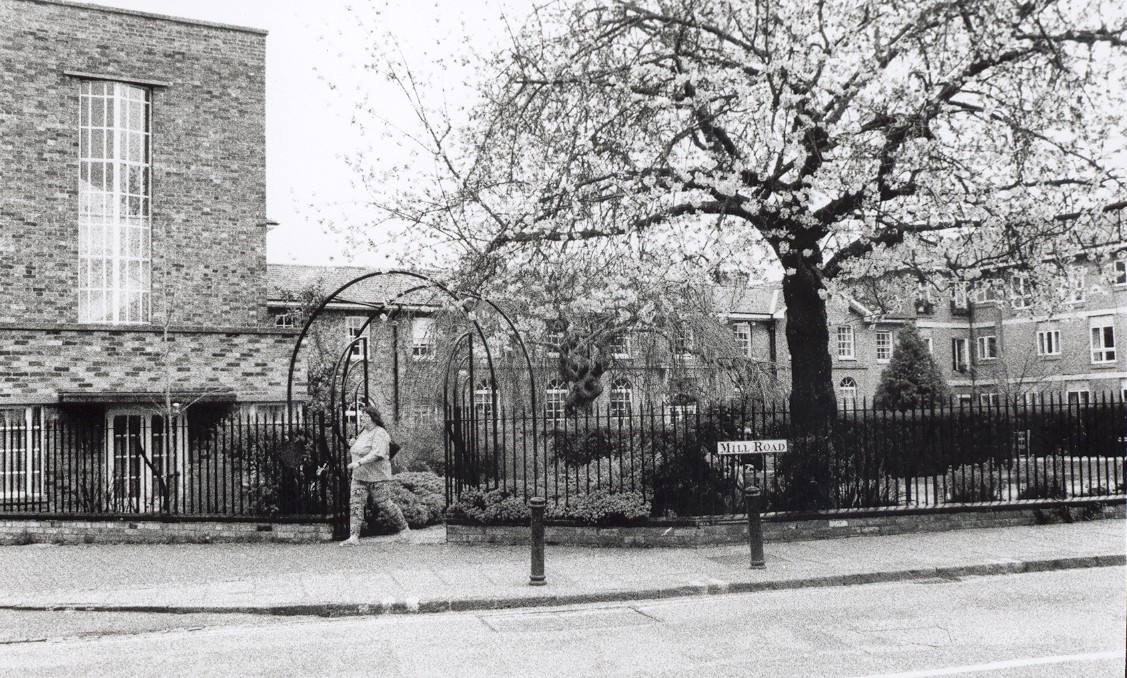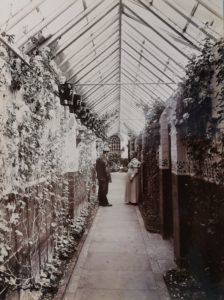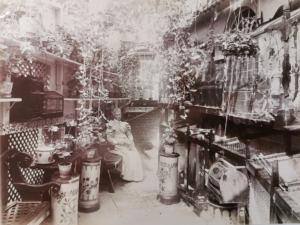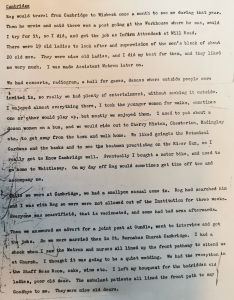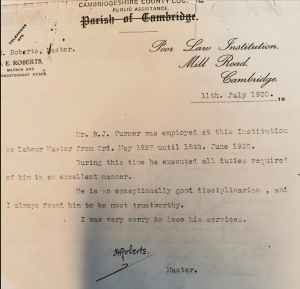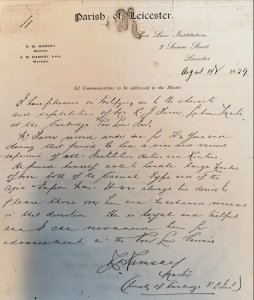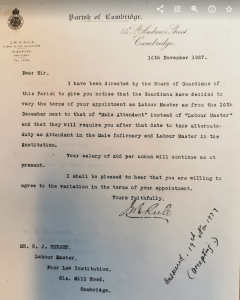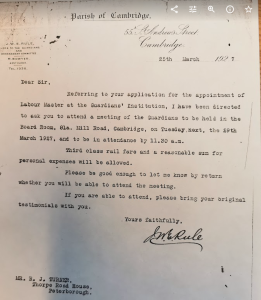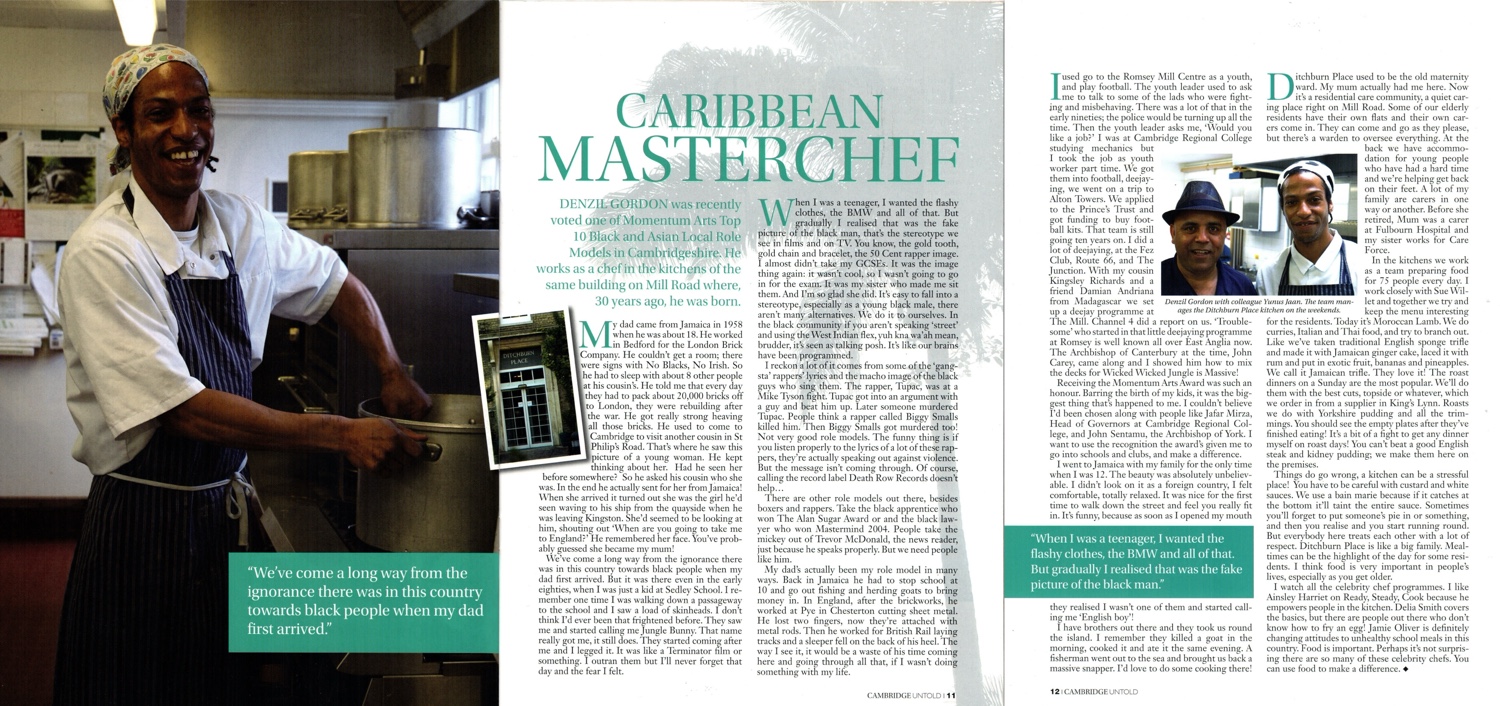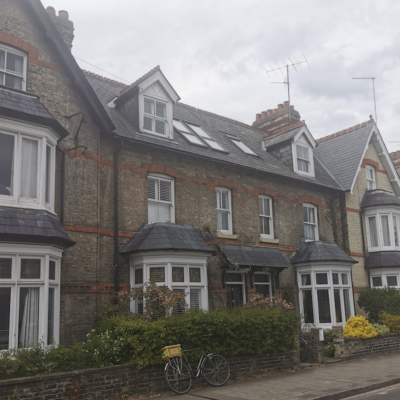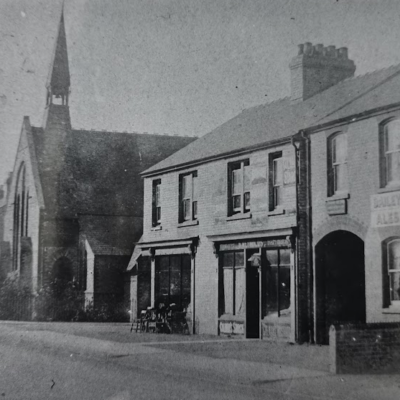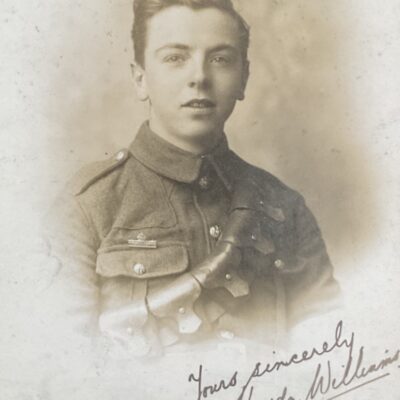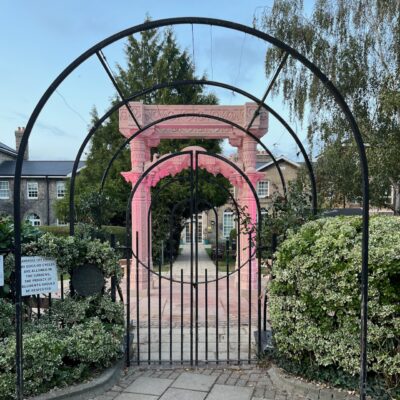Search by topic
- archaeology
- Building of Local Interest
- charity
- church
- crime
- dressmaker
- fire
- Great Eastern Railway
- Listed building
- Mapping Relief
- medieval
- oral history
- poverty
- Public House
- Rattee & Kett
- Religious House
- Roman
- scholar
- school
- Then and Now
- tudor
- women
- work
- world war one
- world war two
Search by text
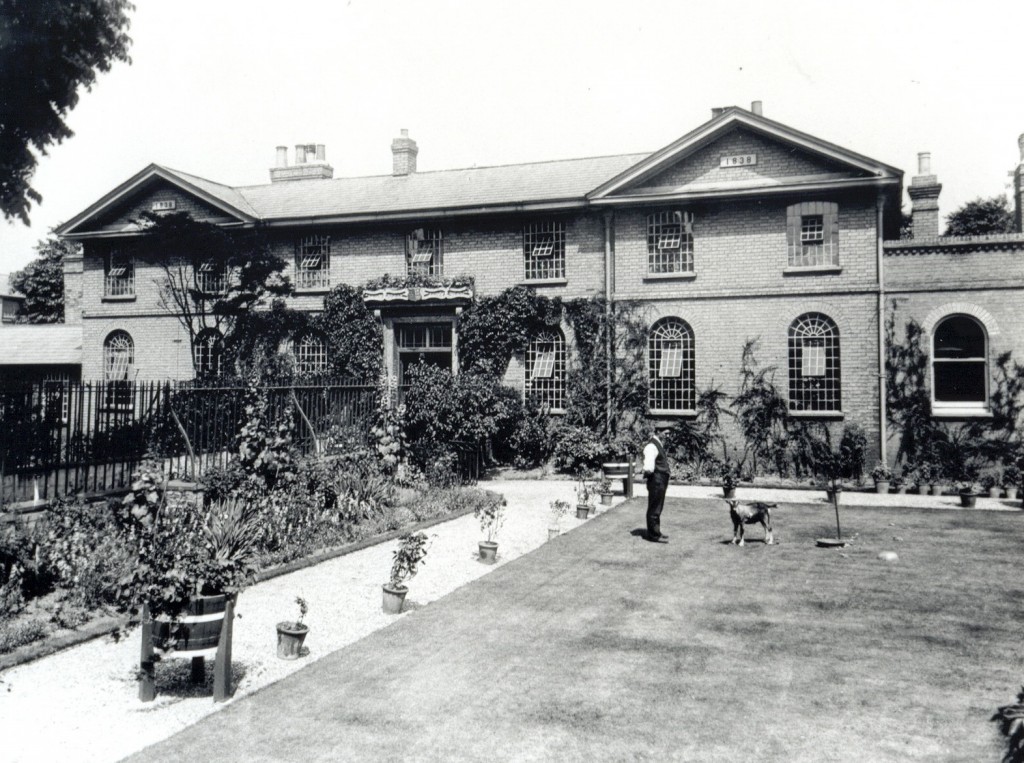 Image courtesy of Cambridgeshire Collection
Image courtesy of Cambridgeshire CollectionCambridge Union Workhouse, Ditchburn Place
The oldest surviving building on Mill Road
The Cambridge Union Workhouse, opened in 1838, is the oldest surviving building on Mill Road.
According to the 1959 Royal Commission on Historical Monuments Survey of Cambridge the original building was of two storeys. In 1836 the Poor Law Commissioners ordered that the fourteen parishes of the Borough should be united for the administration of the laws for the Relief of the Poor. Only six of the existing parochial workhouses were retained and a new Central Union Workhouse was designed to take 250 inmates. Designed by John Smith, occupied in 1838, the site cost £480.
Read part 1 of the complete building report (1838-1939).
Watch Ian Bent talk about the history of Ditchburn Place.
A place of shame
You went to the workhouse if, for example, you were a widow with no means of supporting your children; a man who lost his job and was penniless; an unmarried woman about to give birth; an orphan. Once there, the regime was harsh and prison-like. On arrival, families were split up, men in one half, women in the other, adults separated from children, and no contact allowed.

The mens infirmary, with the matron, Mrs Hosegood. A younger visitor was welcomed to brighten up their day. Courtesy of Cambridgeshire Collection, I.EA.J8 9597.
Tramps’ cells
in 1879, new buildings were constructed along the Mill Road frontage for ‘tramps’, people of no fixed abode. Tramps queued on the pavement, were admitted around 6pm, given a piece of soap for washing, night clothes, a meal, and a bed for the night. after breakfast, they were required to do four hours’ work, usually breaking up stones, and sent away. These tramps were forbidden to return for several days, and so walked to the next workhouse.
Change and Development
All workhouses closed in 1930, and the building became the County Infirmary. In 1939 it was used as a wartime emergency hospital, receiving the first wounded soldiers from Dunkirk in June 1940, and also victims of the London Blitz. When the NHS was formed in 1948, it became the Cambridge Maternity Hospital, where many local people alive today were born. In 1983, when the new Rosie Hospital was built, it was redesigned as sheltered accommodation for the elderly, openings its doors in 1988 as Ditchburn Place.
The Hosegoods of the Cambridge Union Workhouse
Thomas Luke Hosegood was born in 1831 at Poughill in Devon. His wife Mary Ann was born in 1830 at Carisbrooke Castle in Hampshire and after their marriage they moved to Dunkwell Abbey in Devon where two of their sons, Thomas Luke and William Henry, were born.
By 1870 they had become responsible for the running of the Cambridge Union Workhouse in Mill Road. Luke Hosegood, a cousin, was employed as schoolmaster.
The Workhouse was home to over 160 inmates, some of whom were lunatics, and strict discipline was enforced. The Punishment Book (held at the County Records Office) lists whipping and solitary confinement as penalties for offences such as ‘assault with a knife’, attempted ravishment’, drunkenness and theft.
To serve the fourteen parishes of Cambridge and maintain their poor, the Workhouse was built in 1838 at a cost of £480. The original layout consisted of four courts with porter’s lodges, tramps’ cells, bedrooms and offices, master’s and matron’s rooms, day rooms, dormitories, baths, workshops, chapel and mortuary. It was immediately found to be inadequate in size and extensions were made.
At 3 am on the 8th April 1883, a disastrous fire broke out in the infirmary and, but for Mr Hosegood’s prompt action, many lives would have been lost. He checked his list of inmates and found that four were missing. he entered the smoke-filled room and saved three at the first attempt. The fourth, ‘a very decrepit old man’, lay helpless among the bedsteads and Hosegood, groping on the floor, pulled him out. For his gallant action, Luke Hosegood was presented with a testimonial and £5 by the Royal Society for the Protection of Life.
The Hosegoods continued as Master and Matron of the Workhouse until their retirement in 1913.
Tom Doig / Enid Tillson 1984
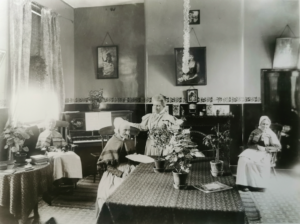
Cambridge Union Workhouse: Mrs Hosegood maintained a tidy and bright Aged Women’s Day Room. Here she is chatting to an elderly inmate in the room. Plenty of reading matter was provided including copies of the magazine, Philip’s Paper. (MoC6/24/59)
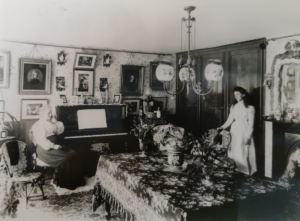
Cambridge Union Workhouse: The interior of the Master’s Drawing Room. Mrs Hosegood is seated at the left. (MoC5/24/59)

Cambridge Union Workhouse: Mr Luke Hosegood prepares to carve the dinner for the inmates in the kitchen. The scales ensure each person has his fair share of meet. (MoC8/24/59)
1895
Cambridge Independent Press 13.9.1895 p.8: BURGLARY AT THE WORK-HOUSE. Cambridge has enjoyed immunity from burglars for almost twelve months. Any sense of security arising from this fact must be rudely upset by the daring burglary which took place at the Workhouse, Mill-road, during Tuesday night. The visitor was evidently intent on breaking fresh ground, for it not often a burglary occurs at a workhouse—the associations of a workhouse are generally regarded to be such that not much booty can be reckoned upon there. It is conjectured that entrance was obtained to the grounds from the back of Gwydir-street. There was no difficulty in effecting this. A pane of glass in the window of the visitors’ waiting room, which almost faces the main entrance, was smashed ; this enabled the burglar to unfasten the window. Even when it was open it was not very easy to get in, for it is only about 18 inches wide. Once inside the building, the proceedings of the burglar show that he had first hand knowledge of the place, and the habits of the Master. The Master’s office, which adjoins the waiting room, and which was unlocked, was entered, and desk and secretaire were forced open. From the latter a cashbox, containing about £5 in money, a gold watch and chain, a gold albert, and other articles were obtained. A large letter weight encased in leather, which is usually kept on the desk, had accidentally been placed inside ; this was found ripped open. The burglar, finding it, doubtless anticipated good haul, and his disgust may be imagined on finding that it contained nothing more valuable than leather and iron. It was thrown down in the corner. The Board-room, which is on the other side of the Hall, was also visited, but nothing has been missed there. One of the windows was found open ; undoubtedly this served as an exit, being more convenient for such a purpose than that by which the place was entered. The robbery was discovered early the following morning. The Master (Mr Hosegood) on coming downstairs had his attention drawn to an empty cash box which was found in the dustbin. An examination of his office, which he had left between nine and ten o’clock the previous night, apprised him of the fact that a burglary had been committed. He at once communicated with the police, who have been actively pursuing their enquiries. We understand that the money was the property of the Guardians.
1927
Maimie Blow from Whittlesey worked at the Cambridge Union in Mill Road from 11.6.1927 to 18.6.1930. She married Reginald Turner, also of Whittlesey on 18th June and after one week’s honeymoon they moved to Oundle Union in Northants until 13.11.1933.
Transcript of oral history: Work at ‘Workhouse’ Mill Road:
2007
In 2007 Cambridge Untold magazine interviewed many Mill Road people including Denzil Gordon who worked as a chef in the Ditchburn Place kitchens.
Further reading
- Part 1 of the complete building report (1838-1939)
- Historyworks’ story of the Cambridge Union Workhouse
- Oxford Archaeology’s Test Pit report conducted with the Mill Road History Project in 2015 and 2016
- George Francis Clark born 1/2/1837
- Leonard Davidson born14/9/1888
- Workhouse to Housework, Cambridge City Community Arts Team, 1991
Contribute
Do you have any information about the people or places in this article? If so, then please let us know using the Contact page or by emailing capturingcambridge@
License
This work is licensed under CC BY-NC-SA 4.0





